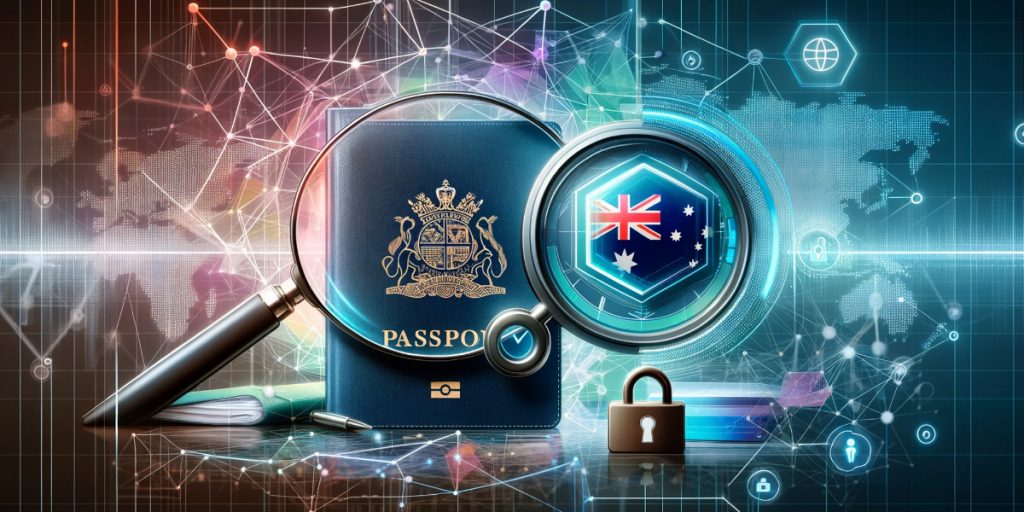In an increasingly digital world, verifying a customer’s identity has become a critical process for businesses to ensure trust and security. With the rise of online transactions and virtual interactions, it is essential for organisations to implement robust identity verification procedures to prevent fraud and maintain regulatory compliance.
Verifying a customer’s identity involves confirming that the individual is who they claim to be, typically through a combination of personal information, documents, and biometric data. This process not only protects businesses from potential risks but also enhances customer confidence and builds stronger relationships.
In this article, we will explore the various methods and technologies available for verifying a customer’s identity, as well as best practices for implementing a secure and efficient verification process. By understanding the importance of identity verification and staying informed about the latest advancements in the field, businesses can safeguard their operations and establish a foundation of trust with their customers.
What is the importance of verifying customer information?
Customer identity verification is crucial for businesses to prevent fraud, comply with legal requirements, and establish a secure environment for transactions. By verifying the identity of customers, companies can reduce the risks associated with identity theft, money laundering, and other illicit activities.
Furthermore, customer identity verification helps in building trust with customers, enhancing the reputation of the business, and reducing potential financial losses due to fraudulent transactions. It also ensures regulatory compliance and helps in maintaining a secure and reliable customer base.
What is the process of verifying the identity of the customer?
The customer verification process entails collecting and verifying information to confirm customer identity and prevent unauthorised access or fraudulent activities. Businesses use various techniques such as document verification, biometric authentication, photo ID checks, and multi-factor authentication to ensure the accuracy and security of the process.
Document verification requires customers to provide official documents, such as government-issued IDs, passports, or utility bills, which are then verified by the company.
Biometric authentication uses unique physical characteristics such as fingerprints, facial recognition, or voice recognition to verify a customer’s identity. Multi-factor authentication combines two or more verification methods, such as a password and a fingerprint scan, to add an extra layer of security.
Overall, the customer verification process is crucial for businesses to protect both their customers and their own business interests. By confirming the identity of each customer, businesses can prevent fraudulent activities, identity theft, and unauthorised access to sensitive information. It also helps in building trust with customers by showing that the business takes security seriously and values their privacy.
Types of Customer Verification Methods
When it comes to verifying customer identities, businesses can choose from various types of verification methods based on their specific needs and requirements. This includes both active and passive verification strategies, as well as biometric authentication.
Active Verification Techniques
Active verification techniques require customers to provide information, documents, or participate in verification processes actively to confirm their identity. This may include submitting official identification documents, answering security questions, or undergoing identity verification checks in person or online with photo ID.
Passive Verification Strategies
Passive verification strategies involve monitoring customer behavior, transaction patterns, or data analytics to verify the identity of individuals without their direct involvement. This method helps in verifying identities discreetly, without disrupting the customer experience or requiring additional steps from the customer, often utilised in contact centers for efficient service.
Biometric Authentication for Customer Identification
Biometric authentication is a cutting-edge technology used for customer identification and verification purposes. This method of customer verification relies on unique physical characteristics such as fingerprints, facial features, or iris patterns to accurately confirm the identity of individuals.
How to Verify Customer Information
Verifying customer information involves checking various details provided by customers, such as name, address, phone number, date of birth, and more, through methods like online document verification to ensure accuracy and authenticity. This section will cover practical steps and best practices for implementing a secure and efficient verification process.
- Collect sufficient information: When collecting customer information, be sure to gather all necessary details for verification purposes. This may include personal information such as full name, address, phone number, email address, date of birth, and any other relevant details. The more information you have, the better you can verify a customer’s identity.
- Use multiple verification methods: To enhance security, use multiple methods to verify customer information. This may include verifying identity documents, conducting phone calls for verification, and sending verification codes to email or mobile devices. By using a combination of methods, you can better ensure the authenticity of the customer.
- Verify information in real-time: Implement real-time verification processes to quickly verify customer information. This can include instant validation of addresses, phone numbers, and other details to ensure accuracy. Real-time verification helps prevent fraud and allows for a more efficient verification process.
- Implement secure data storage: Ensure that customer information is stored securely to protect sensitive data from unauthorised access. Use encryption and other security measures to safeguard customer information and comply with data protection regulations.
- Conduct periodic reviews: Regularly review and update customer information to ensure accuracy and relevance. Conduct periodic checks to verify that customer details are up-to-date and correct. This can help prevent issues with outdated information and maintain the accuracy of customer records.
- Train staff on verification procedures: Provide training to staff members on verification procedures and best practices. Ensure that employees, especially those in the contact center, are aware of the importance of verifying customer information accurately and securely. By training staff, you can improve the efficiency and effectiveness of the verification process.
- Maintain compliance with regulations through diligent customer verification processes: Ensure that your verification process complies with relevant regulations, standards, and data protection laws. By following legal requirements, you can protect customer privacy and maintain trust in your verification process.
By following these practical steps and best practices, you can implement a secure and efficient verification process to verify customer information accurately and safeguard sensitive data.
Role of KYC in Fraud Prevention
KYC plays a vital role in fraud prevention by helping businesses verify the identities of their customers, assess their risk levels, and detect potentially fraudulent activities. Implementing stringent KYC procedures can significantly reduce the risks associated with identity theft, account takeovers, and other financial crimes.
Implementing KYC Procedures
Implementing KYC procedures involves collecting and verifying customer information to confirm their identities and assess their risk profiles, aligning with AUSTRAC guidelines. This may include verifying official identification documents, conducting background checks, and screening customers against sanction lists or watchlists.
Compliance with Regulatory KYC Requirements
Compliance with regulatory KYC requirements is essential for businesses to operate legally, prevent financial crimes, and maintain trust with regulatory authorities.
Enhancing Customer Experience through Verification
Enhancing the customer experience through verification processes is crucial for businesses to build trust, streamline operations, and provide a seamless user journey. This section will explore how efficient verification procedures can simplify the customer onboarding process, reduce friction, and improve overall satisfaction levels.
Streamlining the customer verification process
Improving the verification process entails refining methods to enhance efficiency, ease of use, and security for both businesses and customers. This section will explore the advantages of automating verification steps, minimising manual involvement, and incorporating advanced technologies.
- Automation: Implementing automated verification processes can significantly improve efficiency and reduce human error. Utilising software and AI algorithms can streamline the verification process, allowing businesses to verify customer information quickly and accurately.
- Minimising manual involvement: By minimising the need for manual verification, businesses can save time and resources. This can be achieved by integrating seamless verification methods such as two-factor authentication, biometric verification, or digital identity verification.
- Advanced technologies: Leveraging advanced technologies such as Caspar can help businesses detect fraudulent identities and ensure the authenticity of customer information.
- User-friendly interface: Simplifying the verification process for customers by providing a user-friendly interface can enhance the overall customer experience. Clear instructions, easy-to-follow steps, and minimal friction can help customers complete the verification process quickly and easily.
- Real-time verification: Implementing real-time verification methods can provide instant results, allowing businesses to make quicker decisions. Real-time verification can also help businesses prevent fraud by detecting suspicious activities in real-time.
By improving the verification process through automation, advanced technologies, and user-friendly interfaces, businesses can enhance security, efficiency, and customer satisfaction. Investing in these enhancements can help businesses stay ahead of fraudsters and provide a seamless verification experience for their customers.
Utilising Multi-Factor Authentication
Multi-factor authentication is a robust security measure that requires users to provide two or more verification factors to access their accounts or services. This final section will delve into how combining different authentication methods can enhance security and reduce the risks of unauthorised access.
Conclusion
Verifying customer information is a multifaceted process that requires careful consideration of various methods and techniques. By employing a combination of active and passive strategies, as well as embracing biometric authentication, businesses can effectively verify customer identities and enhance the security of their operations. Understanding and implementing these methods is crucial for any organisation aiming to maintain compliance, prevent fraud, and build a trustworthy relationship with its customers. As the digital landscape continues to evolve, staying informed about the latest trends and advancements in verification technology will be key to the success and security of businesses worldwide.



